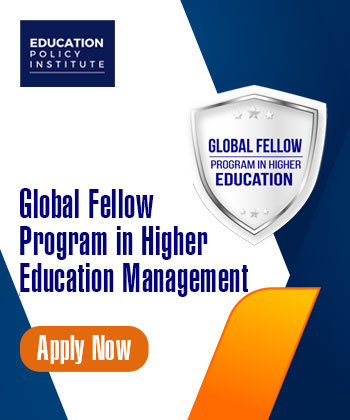Competency-Based Learning for K-12: A Comprehensive Guide
March 29, 2024The purpose of learning is growth, without which our lives are meaningless, and each human being is unique which makes us special in every walk of life showcasing that the learning styles in each person also differs. Understanding this human uniqueness and facilitating personalized learning is what competency-based learning does. Competency-based learning have altogether altered the traditional teaching-learning system by providing flexibility in learning and allowing students to move with their own pace and competency.
Competency-Based Education in K-12
Competency-based education is an outcome based educational approach which evaluates the student’s mastery over a topic through newly articulated assessment strategies which investigates each student’s demonstration of their own skills, knowledge and values attained in that particular field/task.
The contemporary definition of competency-based education outlines several key principles.
- Firstly, it emphasizes empowering students on a daily basis, enabling them to take control of their learning experiences and determine how they generate, apply knowledge, and showcase their understanding.
- Secondly, assessment is viewed as a constructive and positive learning experience, offering students timely, relevant, and actionable evidence of their progress.
- Thirdly, personalized and timely support is provided to students, tailored to meet their individual learning needs.
- Furthermore, advancement is linked to evidence of mastery rather than mere seat time, promoting a focus on competency.
- The approach encourages active learning through diverse pathways and flexible pacing, fostering a dynamic educational experience.
- Equity strategies are deeply embedded in the culture, structure, and teaching methods of schools and educational systems, ensuring fairness for all students.
- Lastly, rigorous and uniform expectations for learning, encompassing knowledge, skills, and attitudes, are clearly defined, transparent, measurable, and transferable across various educational contexts.
Tips for Integrating Competency-Based Learning into K-12 Education
Embracing competency-based learning as a staple in K-12 education has become the norm, emphasizing the critical need for its effective integration within schools.
So, here are some tips to make CBE more fruitful in our educational system:
-
Establishing a Competency-Based Learning Environment:
For any activity to take place in its fullest form, a proper growth environment is necessary. Thus, schools and teaching professionals must be alert in providing the best educational environment where the students can progress through their learning without fear and inhibitions.Rather than the classrooms being a mere destination of instruction delivery, allowing students to be themselves and encouraging them to put forth their own ideas, dreams, goals and learnings with grit brings forth real education and the growth of competency-based learning takes place.
-
Individualized Learning Blueprints:
Customize learning experiences to accommodate the unique needs and learning pace of each student as well as craft individualized learning plans that resonate with the strengths, interests, and areas of improvement specific to each student.This gives the student a sense of being included together with attaining the confidence that they can learn anything they want to.
-
Teachers Training and Professional Growth:
Offer opportunities to educators to ensure that they acquire the necessary skills and resources for successful implementation of competency-based learning through training and professional development activities.This must include equipping teachers with strategies for differentiation, designing effective assessments, and integrating technology seamlessly into their teaching practices.
This comprehensive approach empowers educators to create engaging and tailored learning experiences that cater to the diverse needs of their students leading to the best CBE in schools.
Assessments Based on Competencies in K-12 Education
The assessments in CBE is meaningful and justifiable where, inclusive and meaningful assessment practices in education extend beyond traditional methods. They involve providing formative feedback that is not only useful but also growth oriented and actionable.
Educators actively use real-time data from formative assessments and student feedback to tailor instruction, ensuring robust support for each student's progression toward graduation.
This dynamic approach integrates formative assessments with summative assessments, offering multiple opportunities for students to advance by showcasing their knowledge and skills.
The assessment strategy encompasses diverse measures, including authentic, performance-based assessments. These assessments allow students to participate in project-based, community-based, and workplace-based learning experiences that align with required competencies and higher-order skills.
Moreover, the focus is on providing assessments when students demonstrate proficiency, maintaining consistency in proficiency determinations across the student body.
The approach accommodates learners at different points on their educational journey, allowing them to submit evidence aligned with their current zone of proximal development and achievable learning targets.
This comprehensive and adaptive assessment framework ensures a student-centered approach, enriching the overall educational experience.
Outcomes-Based Education (OBE) vs. CBE
Outcome-Based Education (OBE) involves establishing predetermined learning outcomes or objectives, with educators explicitly defining the knowledge and skills for students to acquire by the program's conclusion. Subsequent assessments measure the extent to which these outcomes have been attained.
In contrast, CBE emphasizes nurturing specific competencies or skills, focusing on a student's ability to apply knowledge in real-world situations. Assessments in CBE are intricately tied to competency mastery, with students progressing based on demonstrated proficiency through a mix of formative and summative assessments.
Let’s see some major differences:
-
Learning Focus
OBE prioritizes predetermined learning outcomes or objectives. Learning activities in OBE are intentionally designed to achieve these specific outcomes.
CBE directs its focus toward the mastery of distinct skills and competencies. Progression within CBE occurs as learners showcase their proficiency in these targeted areas.
-
Assessment
In OBE, assessment serves as a critical tool for determining the successful achievement of specific learning objectives or outcomes by learners. This involves ensuring that assessments align directly with the desired educational outcomes.
In the context of CBE, assessments are centered on evaluating a learner's capacity to execute specific tasks or skills. These assessments primarily aim to measure proficiency in a particular competency.
-
Progression
In an OBE framework, progression is typically organized according to a predetermined timeline. Learners collectively advance through the curriculum, following a predefined course or program.
In CBE, learners have the flexibility to advance based on their mastery rather than adhering to a predetermined timeline. This approach facilitates personalized learning journeys, enabling individuals to move forward at their own pace.
Advantages of a Competency-Based Approach

-
Lifelong Learning Mindset:
Cultivating a mindset for continuous learning is vital in competency-based education. Prioritizing competency mastery enables students to acquire specific skills and understand the perpetual nature of learning.This orientation prepares them for a lifelong commitment to education and skill enhancement, ensuring they are well equipped to navigate and succeed in an ever-changing professional landscape beyond their formal education years.
-
Flexibility:
Flexibility in a CBE model allows learners to progress at their own speed, catering to diverse learning preferences and abilities.By removing the constraints of a fixed timeline, students have the liberty to explore topics at a pace that suits their understanding, promoting a more personalized and responsive educational environment.
This flexibility is integral to cultivating an educational experience that is attuned to the unique needs of each learner.
-
Application in Real-Life Scenarios:
CBE demonstrates a commitment to equipping students with practical skills beyond theoretical knowledge.Competencies enable students to apply knowledge in real-world scenarios, striking a balance between theoretical understanding and practical skills for professional settings, community engagement, and daily life.
Prioritizing these applicable competencies prepares students to navigate diverse contexts, fostering a well rounded and adaptable skill set.
-
Comprehensive Evaluation:
Comprehensive evaluation in competency-based education signifies a departure from traditional exams. Assessments are diversified, including methods like project-based evaluations, presentations, and practical applications.This approach provides a comprehensive view of a student's capabilities, assessing practical skills, critical thinking, creativity, and collaboration.
Holistic assessment ensures a well-rounded evaluation, considering diverse aspects of the student's learning experience.
-
Being a master:
CBE prioritizes high proficiency and deep comprehension before students progress, ensuring a thorough understanding and mastery in their learning.This commitment builds a strong foundational knowledge base, allowing students to confidently approach advanced concepts and skills.
-
Optimized Resource Distribution:
CBE strategically directs instruction to address individual learning needs. This targeted approach minimizes time spent on mastered content, allowing resources to focus on areas requiring additional support or enrichment.
Challenges With Competency-Based Learning
-
Complexities in Implementation:
Implementing a CB model requires intricate logistical adjustments, including substantial changes in curriculum design, assessment methods, and the overall educational framework.Successful integration demands thorough planning, coordination, and training to align with the goals of personalized learning and proficiency-based advancement, necessitating a comprehensive reassessment and restructuring of educational practices to accommodate the principles of CBL.
-
Student accountability:
Here, students face the challenge of increased responsibility for their progress, necessitating proactive, self-directed engagement. They set goals, monitor achievements, and manage time efficiently, fostering essential life skills.However, this autonomy can be challenging for those unaccustomed to self-directed learning, emphasizing the need for encouragement and support in cultivating a sense of responsibility for their educational journey.
-
Teacher training:
Teacher training in CBL is vital, requiring substantial professional development. Educators must adapt to new instructional and assessment methods, gaining skills to facilitate personalized learning and align their teaching practices with this innovative approach which demands time, money, and effort. -
Technology integration:
Schools must invest in and skillfully integrate resources, including digital materials and adaptive learning systems. Proficiency among educators and students in utilizing these tools is also crucial which is a time-taking process.
Conclusion
Competency-Based Learning (CBL) revolutionizes education by prioritizing individual mastery, flexible progression, and real-world application of skills. Despite challenges in implementation, the shift towards personalized, lifelong learning is crucial for preparing students for a dynamic future.




